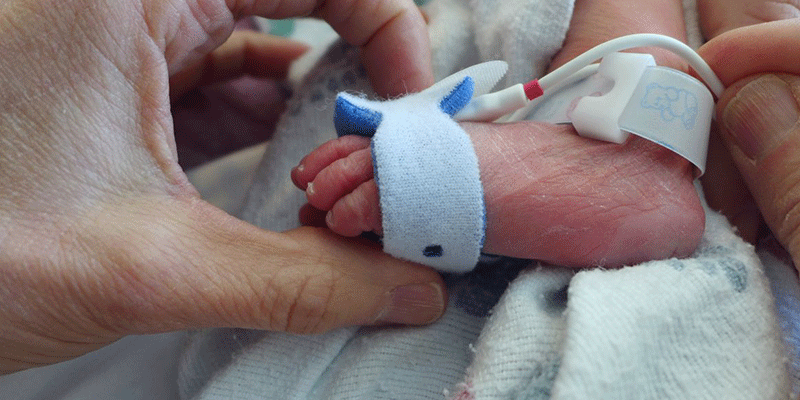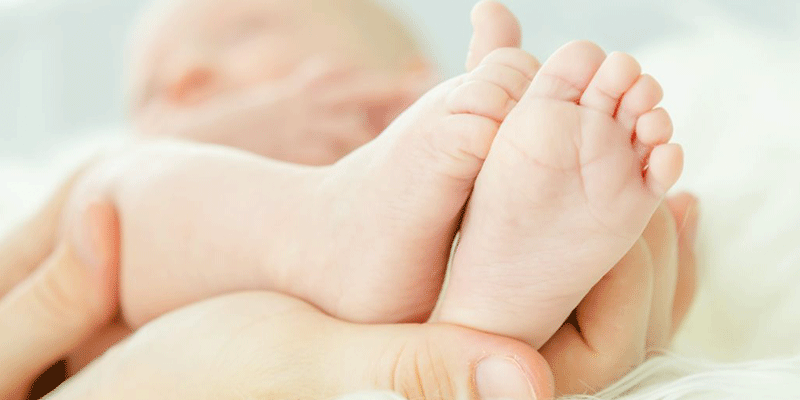
Most babies are born with healthy hearts and have enough oxygen in their blood. However, about 1 baby in every 100 is born with a congenital heart defect (CHD) and 25% of those babies with CHD will have a critical congenital heart defect (CCHD).
Babies with critical CHDs have low oxygen levels and usually require surgery or other procedures in the first year of life. Sometimes intervention must be done urgently, within the first days or weeks of a baby’s life. Some examples of critical CHDs include coarctation of the aorta, transposition of the great arteries, hypoplastic left heart syndrome, and tetralogy of Fallot.
What is pulse oximetry?
Pulse oximetry (also called pulse ox) is a simple and painless test that measures the level oxygen is in the blood.
There are types of CCHD that cause lower than usual blood oxygen levels and those can be picked up by pulse oximetry―even before a baby becomes sick. Early detection and appropriate management can then be provided and may improve a baby’s outcome.
The American Academy of Pediatrics (AAP) recommends pulse oximetry be performed at all newborn screenings to detect CCHD. As of 2018, policies for screening newborns have been implemented in all states in the U.S.
Fetal ultrasounds of the heart do not detect all types of heart defects.
While many problems in the fetal heart are now found early by fetal ultrasounds―and families are getting referred earlier to pediatric cardiologists for further care, there are still cases of CHD that can be missed.
Many newborns develop signs and symptoms of CCHD such as turning very blue or breathing fast right after birth. Those babies are diagnosed and treated before being discharged from the hospital. However, there are babies with certain types of CCHD who may look and act healthy for several days before becoming suddenly seriously ill at home.
How is this screening is done?
Newborn Pulse Oximetry Screening to Detect Critical Congenital Heart Disease – HealthyChildren.orgA small soft sensor is wrapped around the baby’s right hand and one foot. The sensor is hooked up to a monitor for about 5 minutes and measures the oxygen level in the blood and the heart rate. It is fast, easy, and does not hurt. Pulse oximetry screening is done after 24 hours after birth to allow the baby’s heart and lungs to fully adjust to life outside his or her mother. After the screening is completed, the doctor or nurse will go over the reading with the baby’s parents.
Last Updated 2/11/2019
Source AAP Section on Cardiology & Cardiac Surgery (Copyright @ 2019 American Academy of Pediatrics)
The information contained on this Web site should not be used as a substitute for the medical care and advice of your pediatrician. There may be variations in treatment that your pediatrician may recommend based on individual facts and circumstances.






